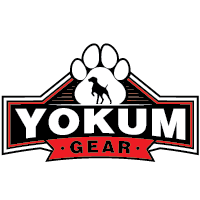Dog walking can be one of the most enjoyable activities for both dog and owner, but it can quickly become frustrating if your pet has a habit of pulling on the leash. Thankfully, there are several effective dog harnesses designed specifically to address this issue. In this article, we will explore various types of harnesses that can help prevent pulling, their benefits, and how to choose the best one for your furry friend.
Understanding the Problem of Pulling
Before diving into the different harness options, it is important to understand why dogs pull on the leash. Dogs may pull for a variety of reasons including excitement, a desire to explore, or lack of proper training. Pulling can be uncomfortable for both the dog and the owner, and can potentially lead to injuries. A well-designed harness can help mitigate this behavior while ensuring the dog’s comfort and safety.
Types of No-Pull Dog Harnesses
1. Front-Clip Harnesses
Front-clip harnesses feature a leash attachment point located at the center of the dog's chest. This design helps to discourage pulling by redirecting the dog’s attention back towards the handler whenever they try to pull forward. Some popular front-clip harness brands include the PetSafe Easy Walk Harness and the Rabbitgoo No-Pull Dog Harness.
2. Dual-Clip Harnesses
Dual-clip harnesses provide the flexibility of having both front and back attachment points. This allows the owner to choose the most effective method for their needs. The front attachment can be used to prevent pulling, while the back attachment can be used for regular walking or running. The Ruffwear Front Range Harness and the Kurgo Tru-Fit Harness are examples of this versatile design.
3. Padded and Adjustable Harnesses
Comfort is a key factor in ensuring the effectiveness of a harness. Padded and adjustable harnesses offer extra cushioning and a customizable fit, ensuring that the dog remains comfortable while wearing the harness. These features can prevent chafing and discomfort during long walks. The Julius-K9 IDC Powerharness and the Chai’s Choice 3M Reflective Dog Harness are renowned for their padded, adjustable designs.
4. Head Halters
Though technically not a harness, head halters are another effective tool in managing pulling behavior. The halter loops around the dog's muzzle and behind their ears, providing control over the direction of the dog's head. When the dog pulls, their head is gently turned back towards the owner. This method can be particularly useful for strong pullers. The Gentle Leader Headcollar is a popular option in this category.
Choosing the Right Harness for Your Dog
When selecting a harness to prevent pulling, consider the following factors:
1. Size and Fit
A properly fitted harness is crucial for both effectiveness and comfort. Measure your dog’s chest and neck girth to ensure you choose the correct size. Most manufacturers provide sizing charts to guide you in making the right choice.
2. Material and Durability
Choose a harness made from durable materials that can withstand wear and tear. Quality materials like nylon, neoprene, and heavy-duty buckles are common in high-quality harnesses.
3. Ease of Use
Opt for a harness that is easy to put on and take off. Some harnesses feature quick-release buckles and step-in designs that simplify the process.
4. Reflective Features
If you often walk your dog during early mornings or late evenings, consider a harness with reflective strips for added visibility and safety.
Tips for Training Your Dog Not to Pull
While a no-pull harness can significantly aid in managing pulling behavior, it is also important to incorporate proper training techniques. Here are a few tips:
- Use positive reinforcement to reward your dog for walking calmly by your side.
- Practice consistency and patience in your training regimen.
- Gradually increase the duration and complexity of your walks to build good habits.
Conclusion
No-pull harnesses are effective tools in managing a pulling dog, making walks more enjoyable and safe for both the dog and the owner. By choosing the appropriate harness and combining it with consistent training, you can transform your walking experience and strengthen the bond with your canine companion. Whether you opt for a front-clip, dual-clip, padded harness, or head halter, investing in a quality product tailored to your dog’s needs is key to successful, pull-free walks.

